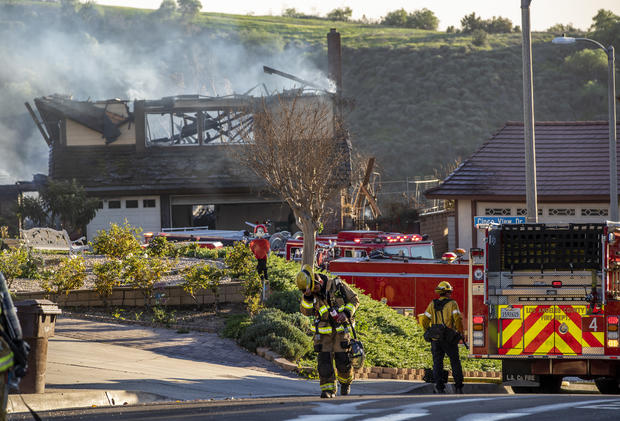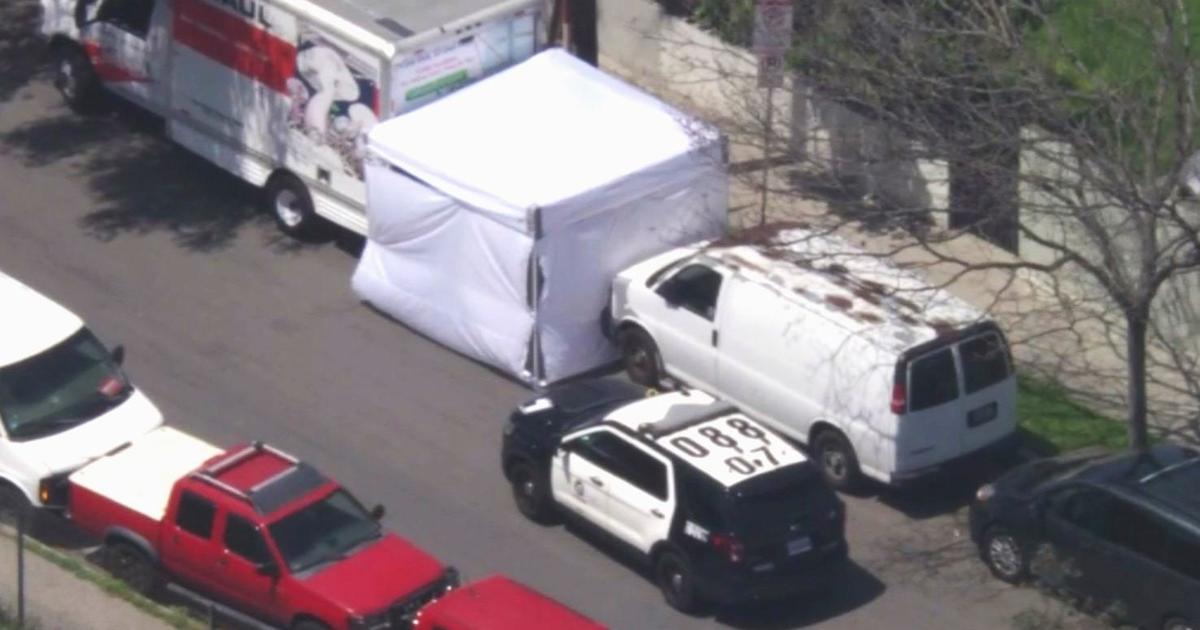New UCLA Study Suggests Wildfires Could Face Drastic Increase In SoCal By 2100
LOS ANGELES (CBSLA) — The University of California, Los Angeles released an alarming study on wildfires in Southern California Friday, which indicated that the number of fires in the area may more than double in the near future.
Earlier in February, communities in both Whittier and Laguna Beach were rudely reminded of the propensity for brush fires in the area, when the combination of the Santa Ana Winds - high-temperatures and high-powered winds - accompanied with the dry climate struck on the same day.
In Whittier, three homes were damaged in a brush fire that started in the foothills behind their neighborhood. The flames spread so quickly that firefighters didn't even have a chance to warn the residents before flames had completely begun to engulf one of the homes.
Now, one of the next-door neighbors to these burned out homes tells CBS reporters that this tragedy has made her more aware of necessary precautions she should take in case the next one comes along sooner than later.
"It's definitely an eye-opener. ... Especially in February," said Sandra Rosales who moved into the area just three months ago. Wild fires might currently be less frequent in February now, but based on the study, fire season could come a lot sooner, and end a lot later in the future.
The study, based on the potential for average temperatures to increase by the year 2100, indicated that the amount of high-risk fire days could nearly double to 58 days out of the year. This is if temperatures increase by 9 degrees in that time span. If they increase by 6 degrees in the same gap, average high risk fire days will still rise by 60%.
"You get that hot, dry air. It dries out the fuels, and that then promotes ease of ignition of the fuels, hotter burns," said Glen MacDonald, one of UCLA's Climate Scientists who assisted with the study. "It's a bad combination."
Despite the fact that these predictions are based on a future that is decades away, the recent rash of brush fires that have struck the area have many concerned.
"As temperatures go up, the vapor pressure deficit gets worse, fuels get drier, and we get more and more days where they come together and give us the potential for having a large fire," he continued.
MacDonald offered advice on how Southern Californians can begin lowering the risk for future generations who may have to deal with this dangerous changes.
Globally, he offered that nations continue working to "reduce greenhouse gas emissions." On a more local scale he advised, "More fire-hardening of our building and our construction, more defensible space around structures."
Rosales was of the same mind, especially after one of these uncharacteristically early fires struck so close to home.
"If it's year-round, its something that we need to be more cautious about," she said. "As a community as well, just learning a little bit more about it so we can prevent disasters."




